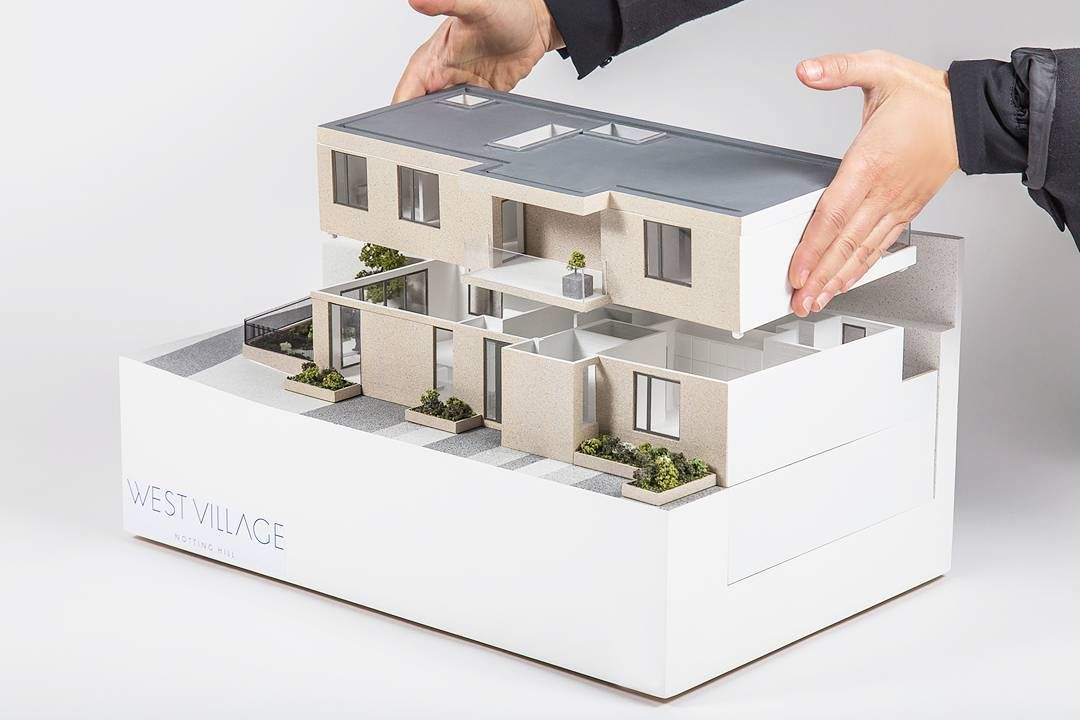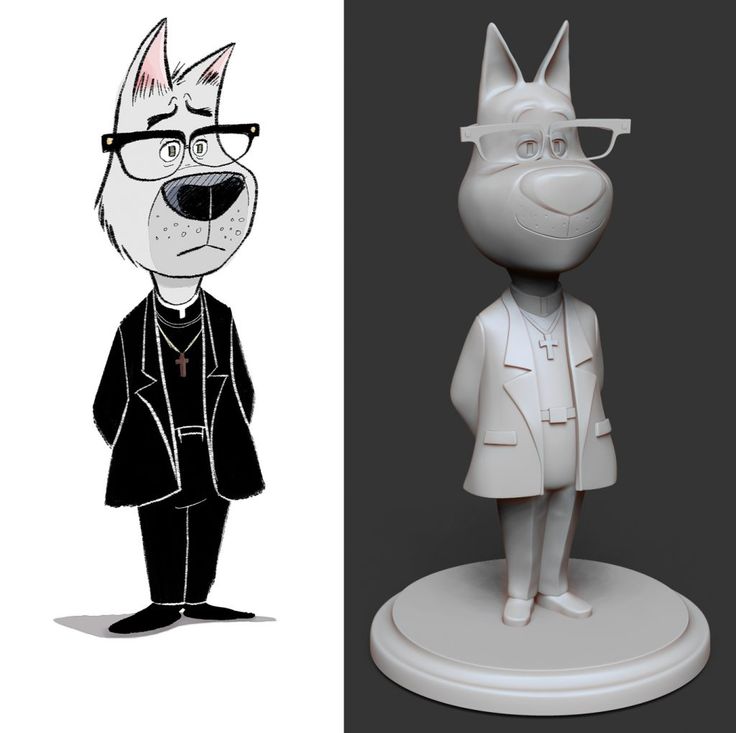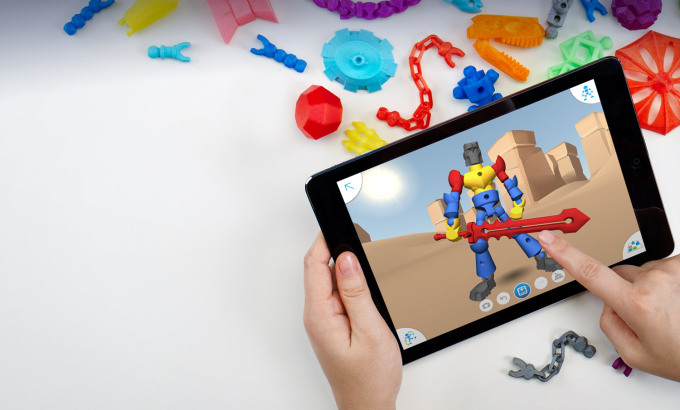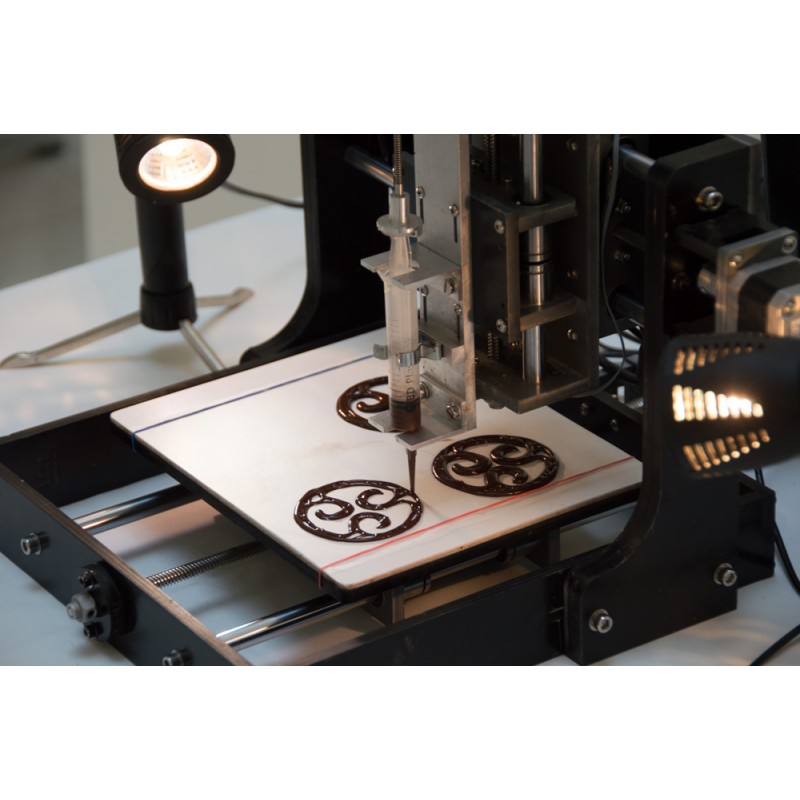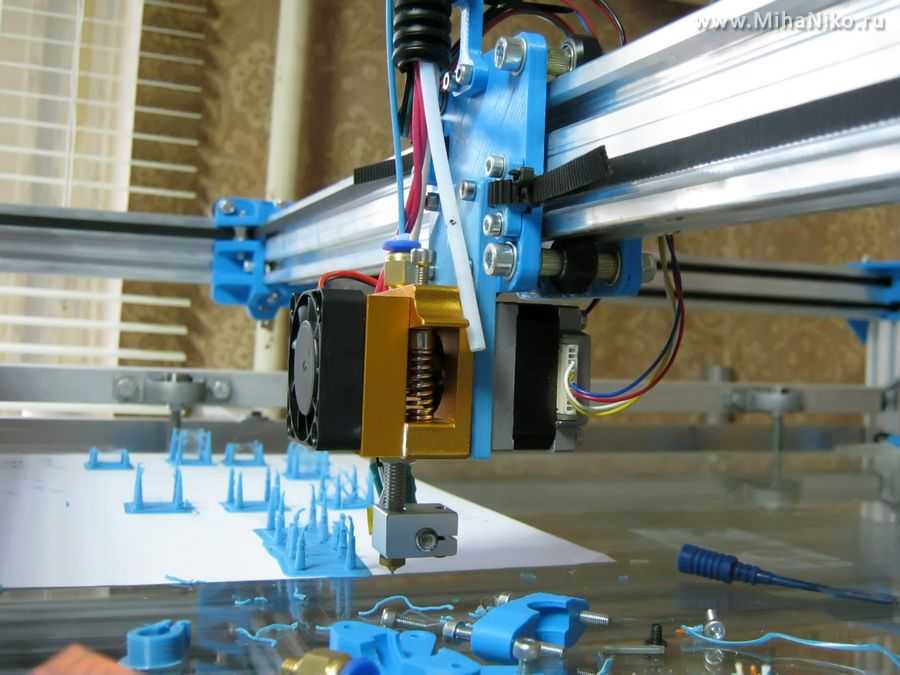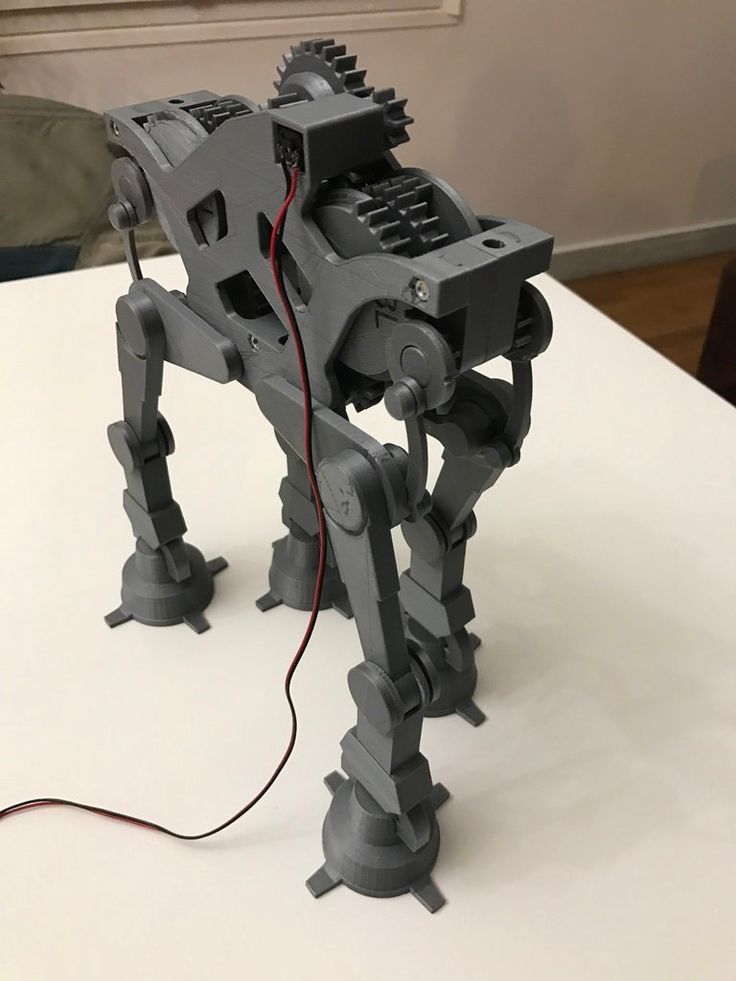3D printing design freedom
3D Printing Offers Design Freedom with New Constraints
SOLIDWORKS 2016’s Print3D PropertyManager Settings tab includes the ability to change the model scale and to reorient the model to fit the print volume. Image courtesy of SOLIDWORKS.
The dynamic duo of 3D printing and new optimization software is giving engineers the freedom to design and produce organic shapes and lightweight structures that raise the bar on ingenuity while delivering unprecedented savings. Yet to fully reap the benefits of this nicely matched pair, engineers need to master a set of new constraints to ensure designs can be produced in a reliable, cost-effective fashion.
Advances in 3D printing technology—from new materials to higher resolution output capabilities—coupled with topology optimization and other design software improvements are empowering engineers to come up with freeform shapes and complex lattice structures that challenge conventional design limitations. These next-generation designs are not only visually compelling, they are typically more aerodynamic, weigh less and boast fewer parts than designs crafted with traditional CAD tools for output using mainstream manufacturing practices.
While traditional boundaries don’t necessarily apply in the world of 3D printing, engineers expecting an unfettered design environment will be in for a surprise. “In general, the talk about 3D printing technology delivering design freedom without the constraints of traditional manufacturing is true, for the most part,” says Tim Thellin, director of Software and Productivity Tools for Stratasys Direct Manufacturing. “If you know you’re building a part with an additive manufacturing process, you don’t have to worry about undercuts, fillets or internal channels that go deep inside the part. Yet there are different constraints driven by the technology you’re using and the materials you are building with.”
Out With the Old, In With the NewFor many 3D printing or additive manufacturing (AM) technologies, the biggest constraint is optimizing designs to minimize or eliminate support structures needed during the actual build process.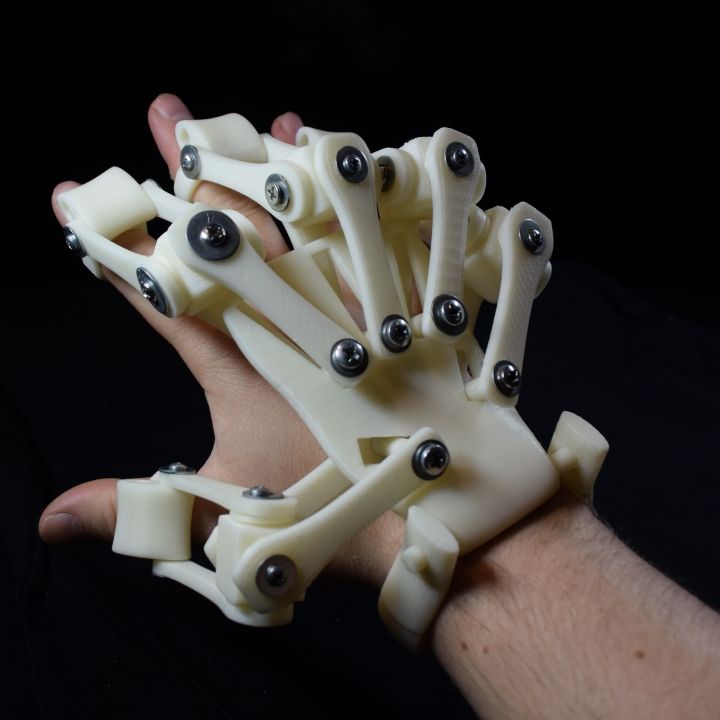 With certain AM technologies, specifically Direct Metal Laser Sintering (DMLS), there are structural checks to ensure the technology used to build up the part doesn’t actually create stresses that result in part deformation, and ultimately, a bad build. Optimizing a design for the materials used or for proper orientation on the build platform are other factors that need to be considered early on in the process, and there are myriad other constraints that may seem foreign to engineers acclimated to traditional manufacturing processes like casting, injection molding and stamping, experts say.
With certain AM technologies, specifically Direct Metal Laser Sintering (DMLS), there are structural checks to ensure the technology used to build up the part doesn’t actually create stresses that result in part deformation, and ultimately, a bad build. Optimizing a design for the materials used or for proper orientation on the build platform are other factors that need to be considered early on in the process, and there are myriad other constraints that may seem foreign to engineers acclimated to traditional manufacturing processes like casting, injection molding and stamping, experts say.
Stratasys Direct Manufacturing’s Direct Metal Laser Sintering (DMLS) offerings are helping optimize structures for aerospace applications, including this lighter weight bracketed part. Image courtesy of Stratasys.
“Design for 3D printing is still in early adulthood,” notes Craig Therrien, senior product portfolio manager at Dassault Systèmes’ SOLIDWORKS. “People think that a 3D-printed part will have the same properties as a casted or forged part, but it doesn’t.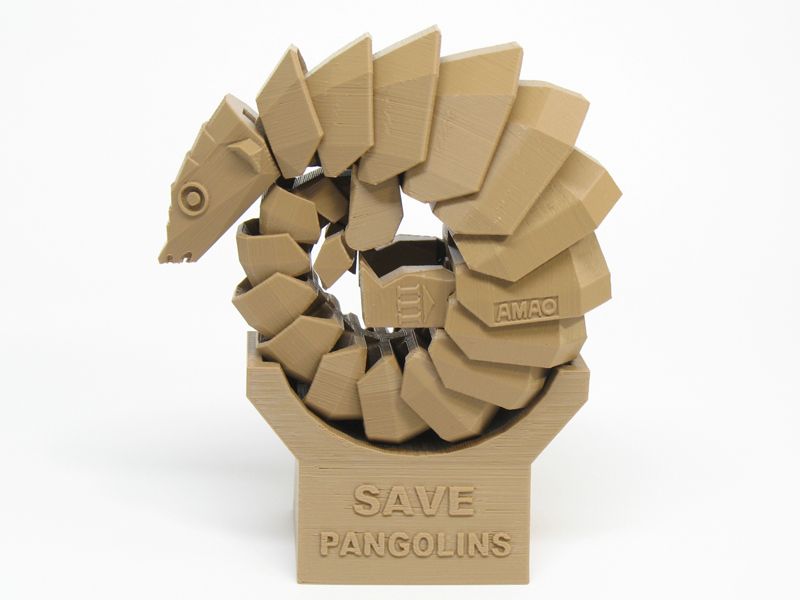 ” Because 3D printing instills different mechanical properties on a part, it is not an exact science, and Therrien says many engineers compensate by over-designing the part in the hopes of adding rigidity—a tactic that minimizes the lightweighting advantages that make 3D printing such a draw in the first place.
” Because 3D printing instills different mechanical properties on a part, it is not an exact science, and Therrien says many engineers compensate by over-designing the part in the hopes of adding rigidity—a tactic that minimizes the lightweighting advantages that make 3D printing such a draw in the first place.
Support structures, in particular, seem to present the biggest design challenges to customers, says Eric Utley, applications specialist at Proto Labs, a digital manufacturing source for custom prototypes and low-volume production parts. Commonly used in AM processes, especially metal technologies, supports are typically scaffold or lattice-type structures required at certain angles to hold a part up as the detailed features are being built. Designing a part so that it steps up incrementally and can be self supporting (instead of featuring long bridges or overhangs) is something engineers untrained in 3D printing techniques don’t necessarily understand, Utley says.
Likewise, untrained engineers may design parts with volumes that inadvertently trap powder material from the 3D printing process or have supports that are difficult, if not impossible, to remove. “These constraints are commonplace with organic shapes and with metal AM practices,” Utley says. Education and consulting services are key, he says. “You need to think about support structures as you’re designing. You need to consider what material you want and then look at which 3D printing technology builds in that material. Next you figure out the limitations and design around it. It’s going to be different for each of the 3D printing technologies in terms of what can get by and what can’t,” Utley explains.
Stratasys’ sparse fill capabilities for its Fused Deposition Modeling (FDM) technology create a honeycomb structure critical for lightweighting parts and accelerating build times. Image courtesy of Stratasys.
Designs that prevent easy support removal, build orientations that don’t work within the build platform, trapped volumes, and issues surrounding wall thicknesses are the biggest mistakes made by BasTech customers, notes Scott Young, engineering manager for the company, which provides AM services. Helping customers work around these inherent design flaws isn’t the problem, Young says, but companies would be better served addressing the issues at the onset of design to avoid additional costs. “It would make life a lot easier and less costly in the end,” he says. “If designers understand things upfront, we can optimize the process and everything goes more smoothly.”
Helping customers work around these inherent design flaws isn’t the problem, Young says, but companies would be better served addressing the issues at the onset of design to avoid additional costs. “It would make life a lot easier and less costly in the end,” he says. “If designers understand things upfront, we can optimize the process and everything goes more smoothly.”
Companies like GE Aviation and Alcoa, which are investing millions of dollars to ramp up their internal AM expertise and perfect 3D printing expertise, are already seeing results. In one of the more highly touted examples, GE completely redesigned its fuel nozzles (19 of them to be exact) on its LEAP engine for Direct Metal Laser Melting (DMLM) processes using EOS systems. The result is a nozzle that is now a single part instead of 20 parts machined together, and it’s far stronger than its predecessor made with traditional subtractive manufacturing processes. “You have to leave behind conventional thoughts and structures when you think in terms of designing for AM,” says Andy Snow, senior vice president of EOS North America, which offers consulting services in how to design for its AM technology.
In recognition of the skills gap, design tool makers 3D printer manufacturers, and simulation software providers are stepping up efforts to provide new services and products to make it easier to design for AM much like any design for manufacturability effort. Stratasys Direct Manufacturing, for example, leverages the Insight software, which automatically slices models to generate support structures and material extrusion paths while also allowing engineers to optimize build orientation for maximum strength. Stratasys’ Fused Deposition Modeling (FDM) technology also allows for sparse fills, a way to print out hollowed or partially filled models optimized to meet cost and weight reduction targets, Thellin says.
There’s lots of activity on the CAD and simulation front. Altair’s topology optimization tools, Inspire from solidThinking Inc. and OptiStruct, are instrumental for creating the organic shapes that AM practices enable, according to Ming Zhou, Altair’s senior vice president of FEA (finite element analysis) and Optimization.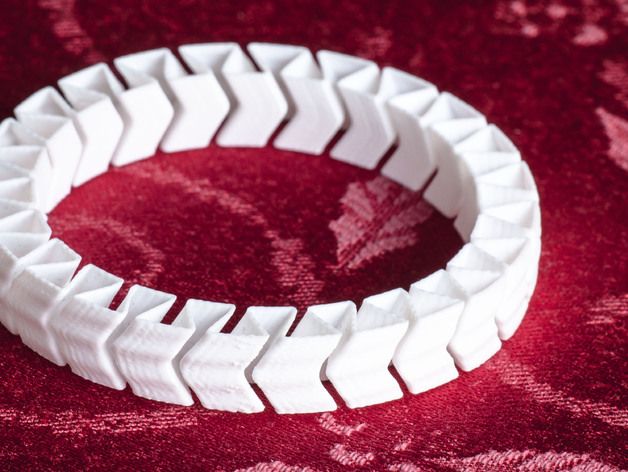 To help engineers effectively integrate topology optimization into the early AM design process, Altair has partnered with Materialise to offer its 3-matic STL software to HyperWorks users, allowing them to make design modifications directly on STL, scanned and CAD data in preparation for 3D printing. Moving forward, Zhou says Altair is working to evolve its optimization algorithms to consider overhang angle constraints, supports and print orientation, as well as simulation of printing processes to analyze thermal and material effects. “We’re trying to bring additional cost components into optimization,” he says.
To help engineers effectively integrate topology optimization into the early AM design process, Altair has partnered with Materialise to offer its 3-matic STL software to HyperWorks users, allowing them to make design modifications directly on STL, scanned and CAD data in preparation for 3D printing. Moving forward, Zhou says Altair is working to evolve its optimization algorithms to consider overhang angle constraints, supports and print orientation, as well as simulation of printing processes to analyze thermal and material effects. “We’re trying to bring additional cost components into optimization,” he says.
Altair’s topology optimization software has a symbiosis with additive manufacturing, maximizing design freedom to create complex, freeform “bionic” structures. Image courtesy of Renishaw.
Two of this year’s major CAD releases, Autodesk Inventor 2016 and SOLIDWORKS 2016, also feature advances aimed at simplifying design for 3D printing.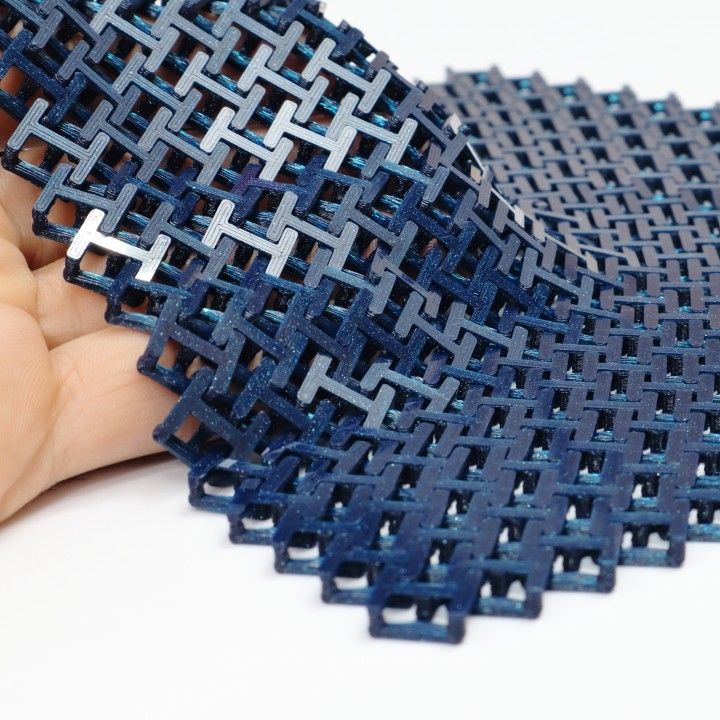 For example, Autodesk Inventor 2016 and Fusion 360 include 3D Print Studio, a dedicated 3D printing environment that lets users optimize model orientation (even split it in two) for a variety of supported 3D printers. Autodesk also has a lot going on in the area of topology optimization as part of its vision for what it calls “generative design—the concept of starting with a goal and exploring all the possible permutations of the solution until the best one is found.” Shape Generator, available in the latest Inventor update, is a topology optimization function embedded directly in the CAD environment, and Autodesk Within, which automatically generates lattice structures that fit user-defined volumes, is being specifically positioned to help optimize designs for AM.
For example, Autodesk Inventor 2016 and Fusion 360 include 3D Print Studio, a dedicated 3D printing environment that lets users optimize model orientation (even split it in two) for a variety of supported 3D printers. Autodesk also has a lot going on in the area of topology optimization as part of its vision for what it calls “generative design—the concept of starting with a goal and exploring all the possible permutations of the solution until the best one is found.” Shape Generator, available in the latest Inventor update, is a topology optimization function embedded directly in the CAD environment, and Autodesk Within, which automatically generates lattice structures that fit user-defined volumes, is being specifically positioned to help optimize designs for AM.
SOLIDWORKS 2016 now features the Print3D Property Manager Settings tab that enables engineers to change model scale or reorient models to fit in a build volume. A preview tab also lets users run a preview analysis to identify faces that require supports during 3D printing, and the software will display striation lines resulting from layering so users can determine whether the print resolution is optimized enough for the desired output, according to Therrien.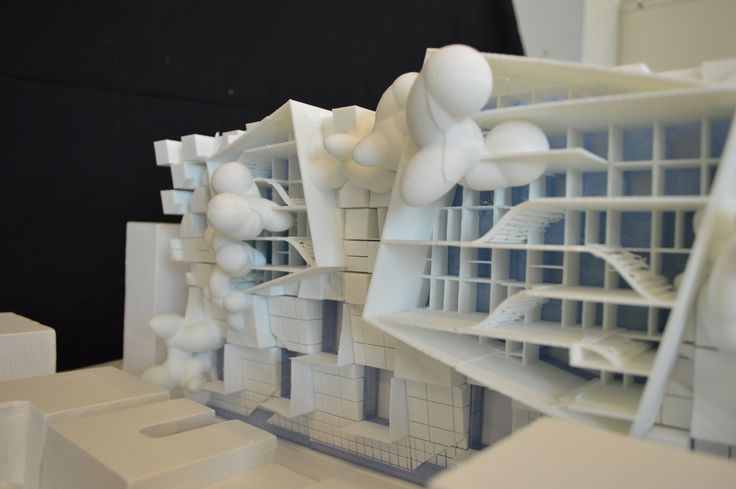
Beyond these capabilities, Therrien sees simulation software evolving to help engineers check the function of a 3D-printed part much like they do now for an injection molded part. “One of the next steps is verifying what we are making because 3D printing is repeatable,” he says. “That’s something that will come in the future.”
One company looking to the future of AM is 3DSim. The startup is leveraging years of research work in AM along with supercomputing capabilities to provide fast and actionable insight into metal 3D printing processes. The idea, according to CEO Brent Stucker, is to help organizations eliminate the waste and reduce the costs of AM practices by predicting residual stress and strain, minimizing the amount of support materials and post-processing finishing work. ExaSim, targeted for release in the second half of 2016, is a whole new set of simulation tools targeted at the machine operator and designed as a guide for helping them build a part properly. The software, which will run in the cloud, takes some of the mystery out of 3D printing processes.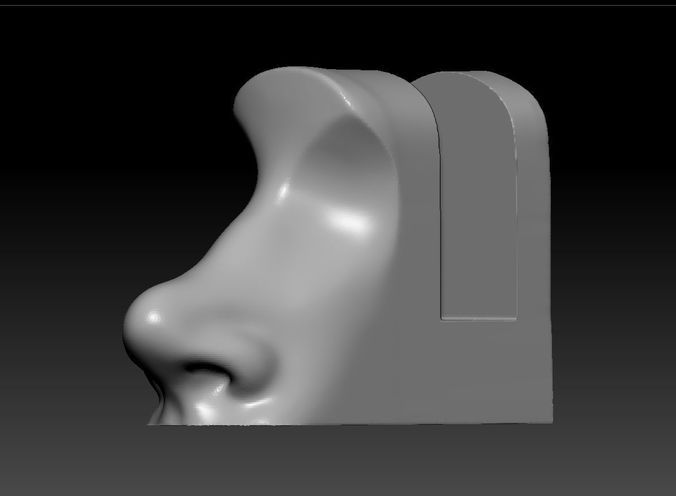
“It takes a long time for someone to learn the physics of what’s going on,” Stucker explains. “Every time you put new geometry on a new machine and create a new scan pattern or vector, you produce a different microstructure and you can’t treat it as a black box.”
With ExaSim, Stucker is trying to turn what seems like a random process into something repeatable. “People spend a lot of time on trial and error experiments to try to satisfy their curiosity or to get a part qualified,” he says. “We’re trying to achieve a dramatic reduction in that time.”
- 3DSim
- Altair
- Autodesk
- BasTech
- EOS North America
- Materialise
- Proto Labs
- solidThinking
- SOLIDWORKS
- Stratasys Direct Manufacturing
- Toshiba Machine
Design Freedom and Flexibility with 3D Printing
Our recent webinar with ZVerse, the creator of CAD as a Service (CADaaS), put a spotlight on the many innovative ways that savvy designers are optimizing innovative designs, thanks to 3D printing.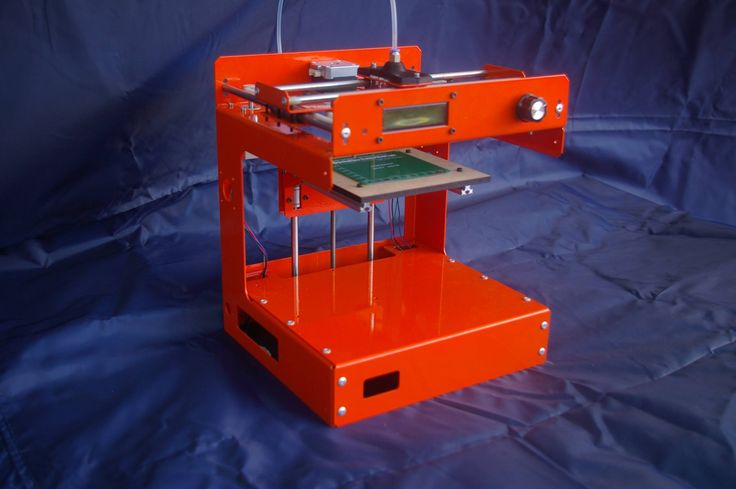
What follows are some insights into what’s possible when a partnership like Shapeways and ZVerse comes together.
1.
Designing for 3D printing is no more expensive than traditional manufacturingIt’s time to debunk this common misconception. No matter whether you choose 3D printing or a traditional manufacturing methodology, there remain two main factors that determine costs: design complexity and price of materials. Traditional manufacturing methods, such as injection molding and Computer Numeric Control (CNC) machining, offer no advantages or shortcuts in the design process.
When it comes to prototyping, especially with increased speed, as well as custom designs, low-volume production and rapid turnaround for tight deadlines, 3D printing is gaining rapid momentum.
2.
Specifically designing for 3D printing, however, can create certain advantagesDesigners planning to 3D print their creations realize much more design freedom along with increased prototyping speed while minimizing materials usage and thus cost.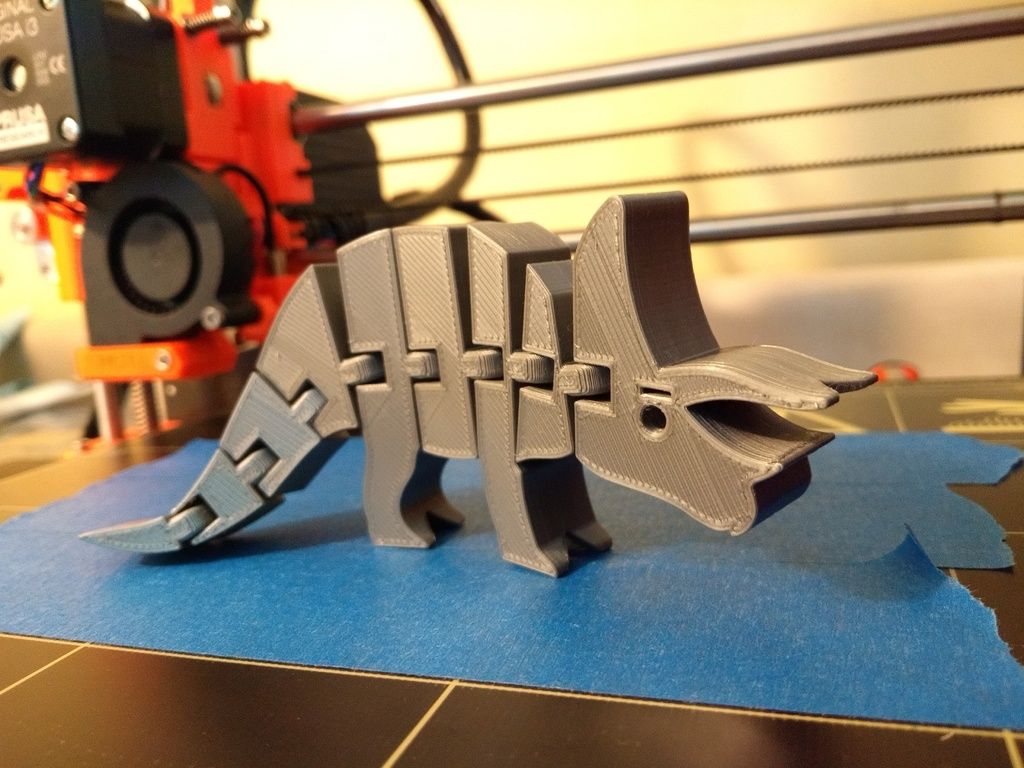 To put it in layman’s terms, it’s art versus part. On one hand, designers know that parametric designs are perfect for goods that feature rigid or boxier designs where every dimension and feature is provided because fit with another component typically is part of the scenario.
To put it in layman’s terms, it’s art versus part. On one hand, designers know that parametric designs are perfect for goods that feature rigid or boxier designs where every dimension and feature is provided because fit with another component typically is part of the scenario.
In contrast, designers choosing 3D printing can work with mesh designs, which are optimal for more freeform and organic products. Popular with artists, architects, jewelers and fashionistas, designers have more opportunities to manipulate geometries and the result can be more focused on meeting unique and individual aesthetics.
According to ZVerse, digital manufacturers turn away 35% to 40% of their leads because they don’t have the needed 3D printing files, which stifles innovation. With ZVerse’s CADaaS platform, digital manufacturers can take advantage of a range of design services that directly translate into keeping more customers and revenue in their ecosystem.
This scenario extends to fix-a-file situations where an existing design file can be optimized for printability or weaknesses in existing designs can be addressed and remedied.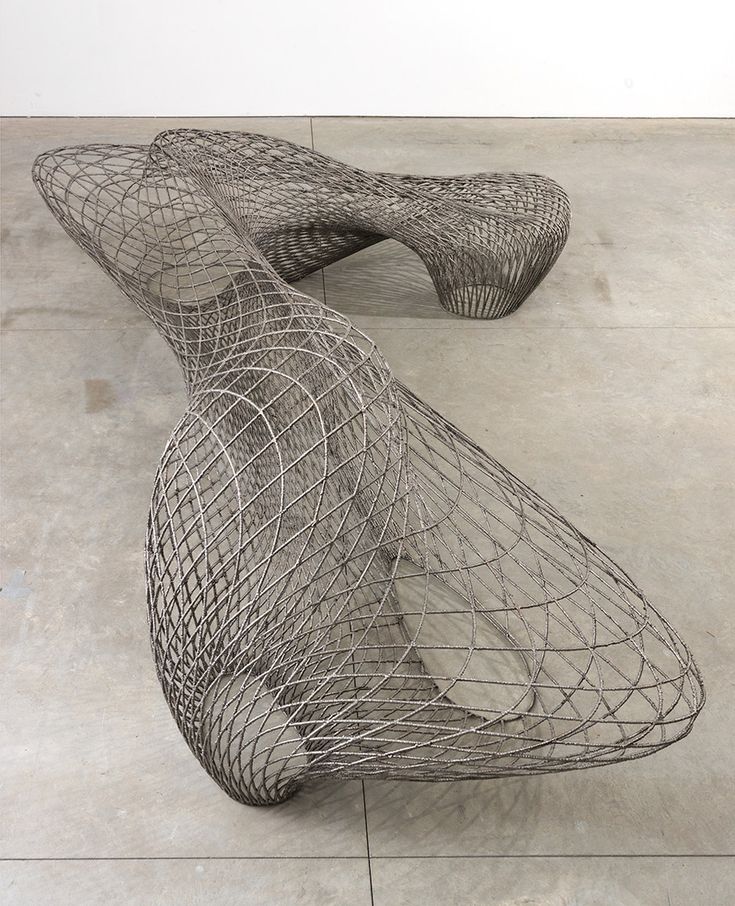
Designers at ZVerse have been asked by customers to develop plans for a wide variety of items, including custom furniture, desktop items, miniature models of skyscrapers, architectural dioramas, awards, trophies, custom urns for departed pets and even an assortment of branding irons. Shapeways has been called upon to print a custom, six-foot-long bathroom vanity that was inspired by the ocean’s coral reefs. The result had to stand up to the rigors of a family’s energetic children while being waterproof and sturdy. Several years ago, Shapeways printed a special dagger that was used on the popular TV series “Game of Thrones.”
Reverse engineering is another tool in the designer’s bailiwick. It’s ideal for parts or products made with traditional manufacturing methods that do not require exact replication. Aided by caliper measurements, pieces can be produced that otherwise may be out-of-stock, no longer available or cost prohibitive.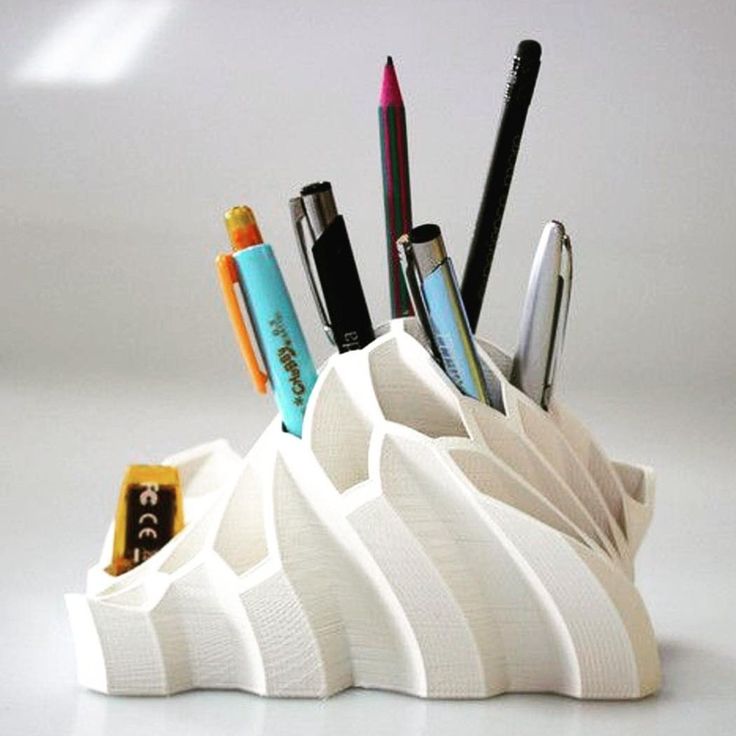 Designers also take advantage of scanning when an exact replica is required.
Designers also take advantage of scanning when an exact replica is required.
By turning two-dimensional drawings into manufacturable 3D files, designers make possible results that otherwise would have been stagnated.
Designers love so-called “sticky note projects,” where a customer has an idea on paper, which are very popular at ZVerse. All a designer needs to get started is a visual reference of some kind and a description. One customer delivered four one-dimensional images and the designer took over to make the conversion needed to prepare the product for 3D printing. Producing one-off designs, which would be price prohibitive to create by traditional means due to steep start-up costs, are a sweet spot for 3D printing.
4.
The jewelry industry is a designer’s 3DP wonderlandBy being able to replicate the exact look and feel of traditionally cast objects, 3D printed jewelry is on the verge of achieving mainstream acceptance. According to a recent market report from Technavio, the global market for 3D printed jewelry will grow by more than $2.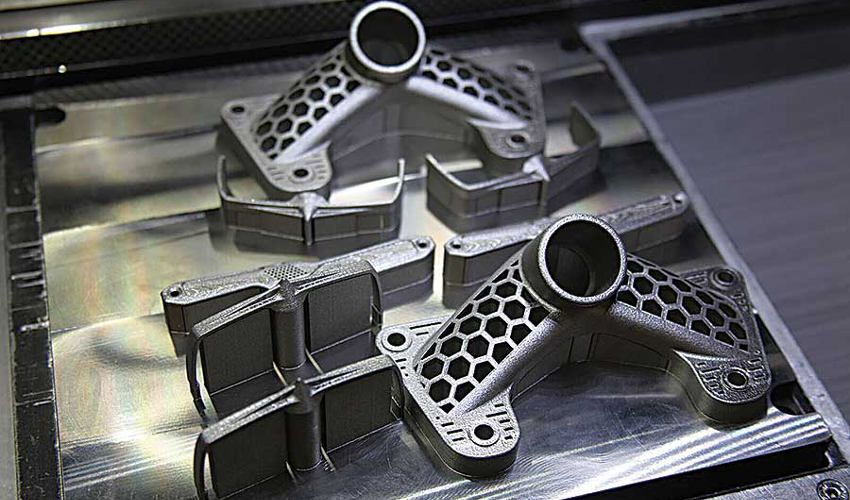 5B between 2021 and 2025, with a CAGR of over 22%.
5B between 2021 and 2025, with a CAGR of over 22%.
A customer recently came to ZVerse with a cherished family heirloom, an antique signet ring. The task was to replicate the ring so each grandchild could have a copy. The designer made sure that every little scratch and the decades-old worn look were also part of the design. Another customer requested a custom ear cuff featuring a Roman statue. While clients typically wait months and months to receive custom-designed items from traditional jewelers, 3D printing makes it possible to drastically reduce the turnaround time while delivering truly one-of-a-kind keepsakes.
5.
The growing availability of plastics, metals and colors increases design possibilitiesA growing variety of versatile plastics and metals are available for 3D printing along with an ever-increasing palette of colors. While the expanding menu of choices bodes well for the industry and customers alike, all materials are different. While some are strong or solid, others are flexible, lightweight, shiny or dull.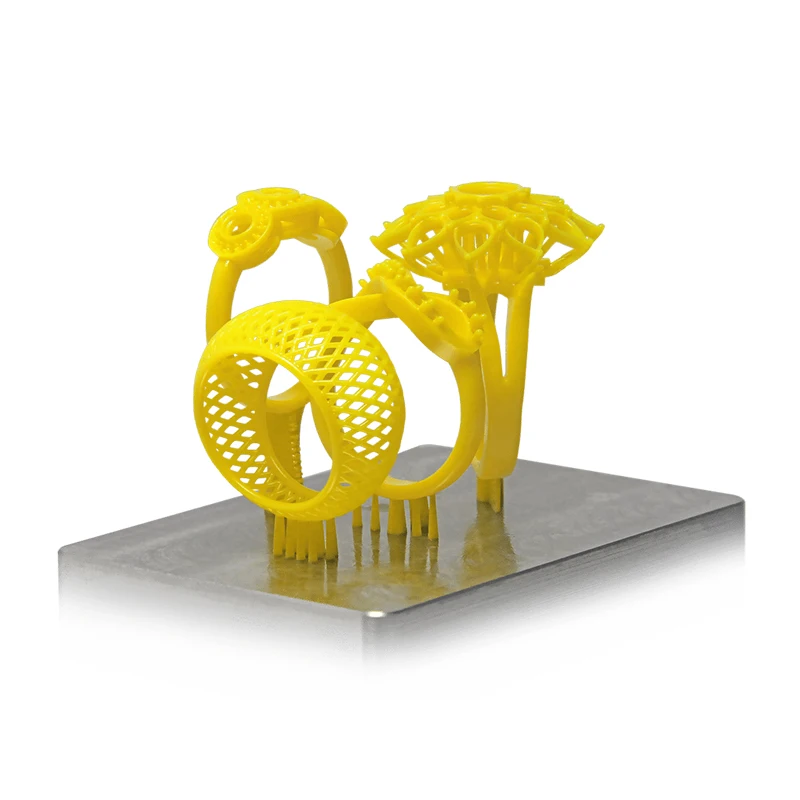 For the best results, designers must consider the ideal material for the task at hand. Choosing 3D printing with resin plastics can help achieve the really fine details while metals still are advancing and need to catch up on the capabilities.
For the best results, designers must consider the ideal material for the task at hand. Choosing 3D printing with resin plastics can help achieve the really fine details while metals still are advancing and need to catch up on the capabilities.
For Shapeways customer Tilt Hydrometer, it was important that its free-floating, beer-brewing product be manufactured in different colors. Shapeways suggested Nylon 12 as the best material, using Selective Laser Sintering, and produced the product line in eight colors.
Meanwhile, 3D printing in metal is enjoying impressive growth due to the greater availability of aluminum, brass, bronze, copper, nickel, platinum, silver, stainless steel and titanium. Cost is always a consideration when making parts or products, especially from advanced materials, such as titanium, which can be cost prohibitive when using traditional manufacturing.
When investigating the best possible material, it’s important to remember that even when a material may pose increased upfront costs, the result may yield a superior finish and extended lifespan for optimal return on investment.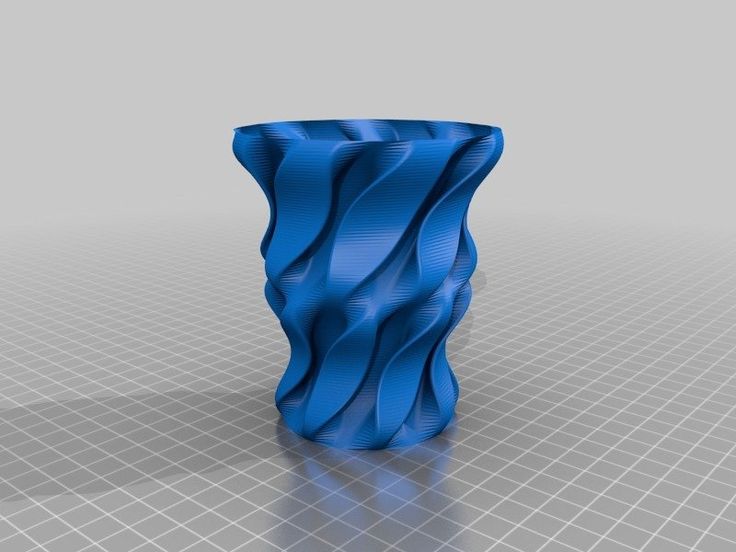
Shapeways offers over 90 materials and finishes, and is always interested in sourcing other materials customers may be interested in using too. Contact Shapeways now to enjoy the benefits of advanced technology and materials for manufacturing creations with accuracy, complex detail, and no minimum or limits in terms of mass customization or single part orders.Shapeways has worked with over 1 million customers in 160 countries to make over 21 million parts!Read about case studies, find out more about Shapeways solutions, and get instant quotes here.
RICK FREEDOM STL File・3D Printing Design Download3D・Cults
SCORPIO LOW POLY
1.82 €
FROG LOW POLY
Free
HIPPO LOW POLY
1.83 €
REX LOW POLY
1. 84 €
84 €
LEGO MAN
0.91 €
SKULL LOW POLY
0,60 €
LEGO HEART
0,60 €
CAT CUTTER FOR POLYMER CLAY
0,60 €
DINO CUTTERS SET
1,34 €
VASE V/2 Diamond
1.32 €
LOW POLYMER PUG
0,92 €
STATUE OF LIBERTY
0.92 €
Best Files for 3D Printers in the Art Category
female bust
Free
Goat Wall Sculpture 2D
1,50 €
Cheems SD Holder
Free
Valentine plankton
Free of charge
Flying Saucer - Just like the real ones
Free
SET OF 6 HEXAGONAL SHELVES - HIVE
2,26 €
Grinch Christmas Tree Ornament
Free
Man In Black (Ed Harris) from Westworld, portrait, bust, 200mm
13. 82 €
82 €
Art category bestsellers
Rattlesnake articulated toy, imprinted body, snap head, cute flexi
3,64 €
Jointed toy "Python snake", body with prints, head with latches, cute flexi
3,64 €
CUTE CROCODILE WITH FLEXIBLE PRINT IN PLACE
2.72 €
POKEMON - VALENTINE 3 KANTO STARTERS (EASY PRINT WITHOUT SUPPORT)
4,99 €
Kangaroo and Joey on flexi printer
2.72 €
Cute skeleton with flexi print
2.72 €
GHOST ZU - GHOST WITH FEET
2.76 €
Cute little fox with flexi print
2,30 €
Biting dragon
3 €
Cute circus baby elephant with flexi print
2.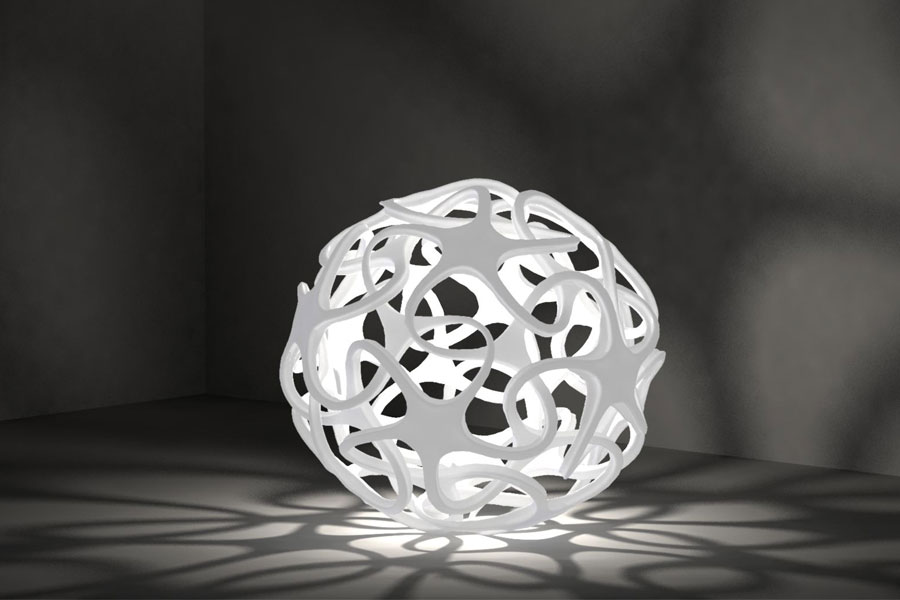 72 €
72 €
Skeleton hand with flexi print
1.83 €
Bearded dragon ball toy, imprinted body, snap head, cute flexi
3,21 €
Archaeopteryx nibbler
3 €
Great White Shark Articulated Toy, printed body, snap head, cute flex.
3.21 €
Flexi PRINT-IN-PLACE Hand
1,80 €
Annoying gift box
2.76 €
Do you want to support Cults?
Do you like Cults and want to help us continue our journey on our own ? Please note that we are a small team of 3 people, so it is very easy to support us in maintaining activities and creating future developments. Here are 4 solutions available to everyone:
Here are 4 solutions available to everyone:
-
AD: Disable the AdBlock banner blocker and click on our advertising banners.
-
AFFILIATION: Shop online with our affiliate links here Amazon.
-
DONATIONS: If you want, you can donate via Ko-Fi here 💜.
-
* INVITE FRIENDS: * Invite your friends, discover the platform and great 3D files shared by the community!
"Freedom of Form with Bulk Customization": Technical Issues in 3D Printing
Source: ArchDail
"Freedom of Form with Mass Customization": Technical Issues in 3D Printing
this technology is developing at an incredibly fast pace. If in the early years we saw the concept as a distant possibility of the future or with small examples, then in recent years we have seen entire printed buildings and more and more complex volumes produced. Fabrication designed by reading a computer file is done through additive manufacturing using concrete or other building materials and comes with many challenges in providing an efficient process that allows building technology to become widespread.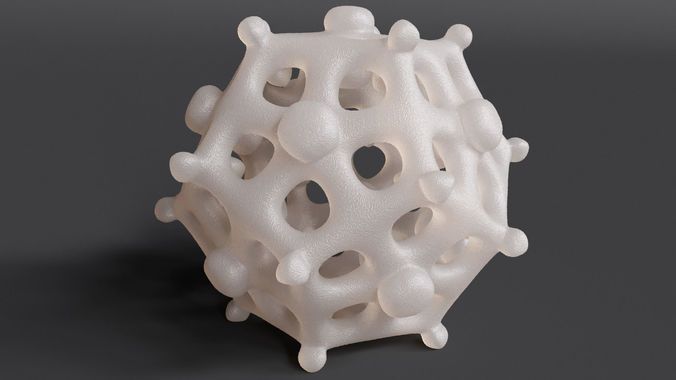 For example, the pavilion printed by the Huizenprinters consortium illustrates this process well.
For example, the pavilion printed by the Huizenprinters consortium illustrates this process well.
The process began in 2018 with initial testing of concrete to develop robotic additive manufacturing. According to the team, "At the time, they still had little knowledge of robotics and a mixture of materials that could only fold up 30cm high before collapsing." The consortium includes construction company Heilijgers BV, concrete supplier Van der Kamp BV, innovation specialists Blueways and the creative innovation community De WAR. In addition to those already mentioned, Jelle Feringa and Summum Engineering were also involved in the project, providing structural design, parametric modeling and engineering.
New forms of production require new thinking.
Since the main goal of the project was education, it was decided that all knowledge gained would be published with the intention of contributing to further research and similar initiatives. The group decided to share what they learned through a series of knowledge sharing events and a website where they published their findings. This information has been published in accordance with the principle of copyleft, as opposed to traditional copyright. “Information sharing is critical to accelerating innovation. Invention is perhaps nothing more than combining existing ideas in a new way, and what better way to collect ideas than in an open community. In this project, we work in accordance with the Creative Commons 4.0 principle of “share and share equally”. said Harmen Siip of De WAR.
The group decided to share what they learned through a series of knowledge sharing events and a website where they published their findings. This information has been published in accordance with the principle of copyleft, as opposed to traditional copyright. “Information sharing is critical to accelerating innovation. Invention is perhaps nothing more than combining existing ideas in a new way, and what better way to collect ideas than in an open community. In this project, we work in accordance with the Creative Commons 4.0 principle of “share and share equally”. said Harmen Siip of De WAR.
As you would expect in any prototyping process, there were a few issues that had to be fixed during the course of the project. Issues such as temperature fluctuations in the barn or the inability to print parts that were too large led to a number of innovations in the process. As described in the project's press release:
“This was followed by several years of technology development and an update of the design and manufacturing strategy.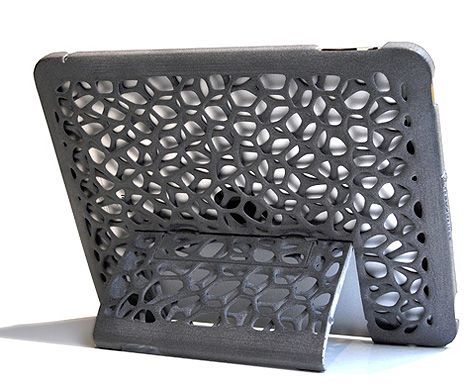 Numerous iterations of machines and software have led to the development of a process to greatly accelerate the curing of concrete. By adding an accelerator to the print head, the concrete mix is set in minutes, allowing very complex designs to be created.
Numerous iterations of machines and software have led to the development of a process to greatly accelerate the curing of concrete. By adding an accelerator to the print head, the concrete mix is set in minutes, allowing very complex designs to be created.
The roof seal was the biggest problem. The breakthrough came with the segmentation of the entire structure into 8 parts. While this solved the problem in theory, in practice the result was extremely difficult geometry to print. Long, thin prints increased the risk of shrinkage cracking, which was reduced by adjusting the mix, using a hardener, and coating the prints after completion. The double curvature led to the possibility of warping; rib structure was introduced. There is a very large (80%) difference in height from one end to the other; the resulting slope made transportation a problem. In addition, the shape meant that a non-planar printing strategy was required with an appropriate print head orientation. In short, the solution of one big problem gave rise to a number of new problems, and all of them were solved systematically.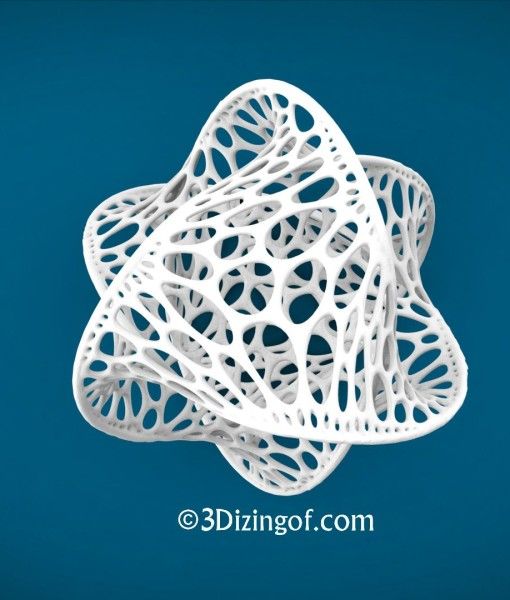 ”
”
3D printed concrete structures do not require formwork, which in itself further reduces the use of materials as formwork life is generally short. Another issue is that 3D printed parts only act by compression, which eliminates the need to include steel in the design. In addition to potentially being cheaper and with a smaller carbon footprint, it makes it much easier to recycle concrete in the event of demolition. In the future, printing is expected to include recycled concrete aggregates.
Built after 4 years, the pavilion embodies the whole process of knowledge developed and does not require any formwork or steel reinforcement. Though small in scope, it demonstrates how knowledge dissemination and investment in technology can play an important role in the future of construction. Moreover, one of the results of the project was the creation of Vertico BV, a company focused on 3D printing technologies. “The promise of 3D printing in any industry is freedom of form with mass customization.